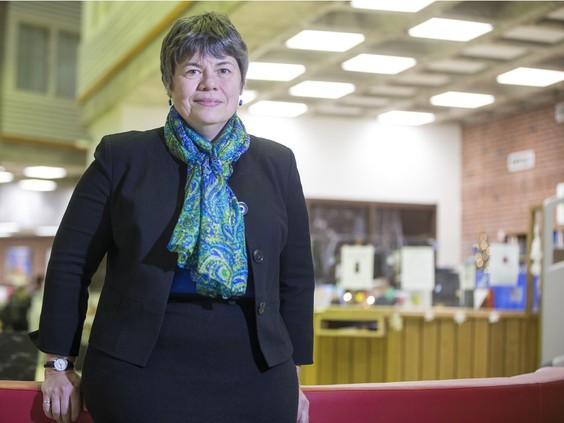
University innovation needed in times of crisis: Kresta op-ed
The pandemic has driven home the point that local problems often require local solutions, USask Engineering Dean Suzanne Kresta writes in The Saskatoon StarPhoenix.
By College of Engineering Dean Suzanne KrestaNews of a made-in-Saskatchewan ventilator that will save lives in the fight against COVID-19 exemplifies the best spirit of our Prairie community — collaborative, solutions-oriented and innovative by nature.
When local firm RMD Engineering approached the University of Saskatchewan in March with its vision to build a ventilator right here in Saskatchewan, we responded.
USask’s College of Engineering contributed equipment, expertise, and technical staff. As the project gained momentum, RMD hired a crop of our co-op students who were looking to prove their worth. Working to critical timelines is key to success in business, and our people stepped up to deliver.
As this remarkable achievement unfolded, RMD, which employs many alumni, continued to tap USask expertise. The College of Medicine provided respiratory therapists and technicians to test the ventilator and provide feedback. A respiratory subject matter expert from the Western College of Veterinary Medicine assisted with testing and developed operations and training manuals. The College of Law provided regulatory insight. As the project intensified, RMD president Jim Boire and his team drew on expertise gained from the Edwards Executive Education program.
Together RMD Engineering, the university and the Saskatchewan Health Authority responded to an urgent need—rapidly, flexibly and with a world-class commitment to providing the best solutions and insight available.
This week, RMD announced it had successfully prototyped an emergency-use ventilator, the EUV-SK1, for Health Canada certification. One hundred RMD ventilators will be delivered in Saskatchewan at a critical juncture in the pandemic response.
The bigger prize is that RMD Engineering is now certified to manufacture medical devices. This opens up important opportunities for new jobs, particularly for engineering graduates, and ways to support our health care system in more cost-effective ways.
This is one story, and it underlines the tremendous potential for innovation in this province. It underlines the importance of having a research-intensive university — and a strong college of engineering — focused on serving the needs of the province.
Although RMD’s project is unique, embarking on this type of collaboration is not a new experience for the College of Engineering. SaskPower is transforming the way our province produces and delivers power, and they are working effectively with Indigenous communities. Both of these initiatives have close ties to USask and our college.
The mining sector is seeking to remain globally competitive as it pits Canadian imagination and innovation against the currency and regulatory advantages available in some other jurisdictions. The need to ensure safety throughout the mine site drives additional innovations. Again, our engineering college can make substantial contributions. In all these cases, the need for Indigenous graduates who understand the needs of remote communities and worksites is acute.
Local entrepreneurs face many business needs, including the need to attract investment capital to Saskatchewan. International Road Dynamics, Mentor Graphics, Vecima, and SED Systems are other examples of local companies which have significantly benefited from having strong ties to USask.
University education is one of the best environments for building critical thinkers who can take on complex problems and work on teams with people from a range of backgrounds. An engineering education is critical for a resource and innovation-based economy. Investing in universities makes sense — and provides the only viable way for Canada to compete in the realities of a global economy.
Well-trained graduates are half the story — but not the whole story. The pandemic has driven home the point that local problems often require local solutions. People who are deeply committed to their local community will put in long hours to find solutions that their world needs.
RMD exemplifies a wonderful community partner — ready to reach out to the university and persist until it finds the right people and the right solutions. I believe this locally built ventilator, which is portable and can be moved to remote locations, will become a benchmark medical device for practicality, ruggedness, and ease of use long after the pandemic subsides.
As we recover from the pandemic, we need to learn from our pandemic experience. Institutions such as ours that are flexible, responsive and innovative will be well-positioned to provide the expertise and leadership this province needs and attract the world-class minds who can help rebuild our Saskatchewan economy from the inside out.

